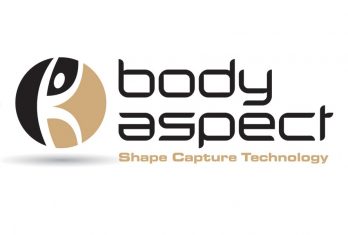

For many years, Body Aspect has been an innovator in 3D full-body imaging. The company has helped to guide the industry into new territories of application for the technology, and is constantly seeking new ways of helping people to benefit from the services it offers. While 20 years of experience speaks for itself in many ways, looking at Body Aspect's development in relation to the technology it is founded upon really helps in understanding how the company has gained the expertise and experience that it proudly possesses today.
The size and shape of Britain
The story begins in the late 1990's when Body Aspect co-founders Graham Hutton and Matthew Broadhead were part of a team of clothing analysts who were conducting surveys regarding body measurements. Surprisingly, the last surveys of this kind had been conducted as long ago as the 1950s, so it was high-time the industry caught up with the changes that body size and shape in British society had undergone in those years. The team used a Telmat imaging system to collect digital silhouettes of participants from which body shape and posture could be analysed. During this period, the team worked with big names in the retail world such as Debenhams, Marks and Spencer and Next who were conducting sizing surveys involving thousands of participants.
Size UK and eTailor
During the early 2000's the core of the development team were involved in two major research projects: Size UK and eTailor. The first of these was a national sizing survey, and the latter was an exploration into individualised clothing using 3D image capture technology. These projects involved the use of the latest 3D imaging equipment, developed by UK body scanning pioneers, Wicks & Wilson.
The birth of Body Aspect
In 2003, Body Aspect was formed with the support of two plastic surgeons who saw potential for the application of 3D imaging technology to breast assessment for women in need of reduction or augmentation. The potential became reality and Body Aspect worked with local NHS clinicians and commissioners to provide a solution to a previously unsatisfactory pathway for elective breast reduction and asymmetry. The relationship with the NHS has strengthened over the years as more and more forward-thinking Clinical Commissioning Groups start to utilise the technology.
Broadcasting Body Aspect: 3D scanning and television
In 2006, Body Aspect provided their expertise and equipment to be used in fashion guru Gok Wan's popular Channel 4 series How to Look Good Naked. This was the first time body-scanning equipment had been utilised in the context of helping people's self-perceptions of body image, and was a key moment in the development of this equipment's new, diverse applications. This exposure did not go unnoticed, and resulted in similar work for the BBC's Am I Normal? (2008) with clinical psychologist Tanya Byron, and ITVs Slim To Win with slimming stalwart Rosemary Conley.
New faces, new ground
Between 2008 and 2012, the company continued its R&D activities whilst negotiating a depressed commercial landscape, until a significant development brought fresh vitality to the company. This shift came in 2012, when Samantha Tema joined Body Aspect. Sam's previous experience in social work, helping people whose diagnoses often included eating disorders, offered the very real potential for Body Aspect to pursue new avenues with its equipment. Not only did the company have the facilities to assist people in body shape and image journeys, they now had someone who could offer personal, experience-based support in patients' journeys, as Sam had undergone her own weight loss journey.
This advantage appeared in a practical sense when Sam spoke at the 2014 EDIC International Eating Disorders Conference, advocating the use of 3D body scanning in assisting people with body image issues. This garnered a lot of support, and eventually took the form of a new project in which gym members at Nottingham's Nuffield Health Centre and Xercise4Less used Body Aspect's scanning tools to compare self-perceptions with the reality of their body scans. Participants found the project to be a great source of motivation, and the 3D imaging was useful in both bodily-awareness and goal creation. The gym project, which ran from 2015-2016 was co-funded by the UK's innovation agency, Innovate UK, and received an overwhelmingly positive response. This inspired the Body Aspect team to lead a follow-up project, from 2017-2018, with upgraded software and the ability to view 3D models on patients' smartphones.
The future is bright, and it's in 3D
Looking to the future, there are many exciting developments underway in the industry. A range of 3D image capture devices are appearing from handheld devices to more affordable capture booths. The future is bright for the 3D full-body scanning industry, with technology becoming increasingly affordable and obtainable, and Body Aspect remains at the forefront of these developments.
(by Max Randall)